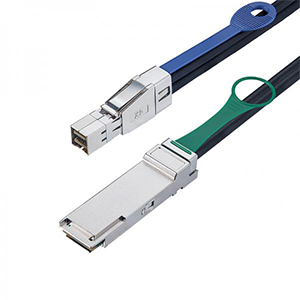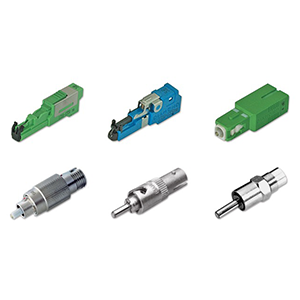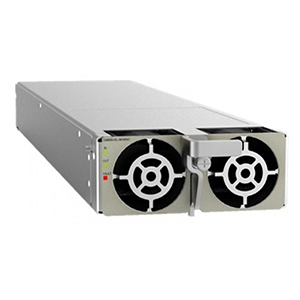Hi, welcome to the introduction to the 40G QSFP+ (Quad Small Form-factor Pluggable Plus) optical module. In this article, I will introduce you to the basic concepts and working principles of 40G QSFP+ optical modules, as well as its advantages as a solution that meets high-speed data transmission needs.
We will also explore the application of 40G QSFP+ optical modules in data center networks and high-performance computing, as well as the high-speed transmission capabilities and port density advantages it provides. I also cover information on technical standards, compatibility, interface types, deployment configurations, and future trends. Let us gain an in-depth understanding of the knowledge and advantages of 40G QSFP+ optical modules.
Introduction to 40G QSFP+ optical module
Definition and rationale:
The 40G QSFP+ (Quad Small Form-factor Pluggable Plus) optical module is an optical fiber module used for high-speed data transmission. It is a type of QSFP multi-channel optical module that supports the transmission rate of each fiber channel up to 40Gbps. The QSFP+ optical module adopts a miniaturized package, making it suitable for high-density data centers and network applications.
The basic working principle of the 40G QSFP+ optical module is to use photoelectric conversion technology to convert electrical signals into optical signals for transmission, and convert the optical signals back to electrical signals at the receiving end. It typically uses multimode fiber (MMF) or single-mode fiber (SMF) for data transmission, depending on the application environment and needs.
40G transmission requirements:
As a high-speed data transmission solution, the 40G QSFP+ optical module can meet the following transmission requirements:
-
High bandwidth requirements: As data centers and network applications continue to grow, the demand for high bandwidth is also increasing. The 40G QSFP+ optical module meets high bandwidth requirements and supports fast data transmission and processing by providing a transmission rate of 40Gbps per channel.
-
High-density applications: Since the 40G QSFP+ optical module adopts a miniaturized package, it can achieve high-density deployment in a limited space. This is important for data center and network environments that require large numbers of connections and high performance.
-
Data center interconnection: 40G QSFP+ optical modules can be used for interconnection within the data center to connect servers, storage devices, network equipment, etc. It provides high-speed, reliable connectivity, supporting fast data transfer and communication within the data center.
-
Fiber transmission distance: Depending on the specific fiber type and optical module specifications, the 40G QSFP+ optical module can support different transmission distances, including short-distance multi-mode fiber transmission and long-distance single-mode fiber transmission. This makes it suitable for different application scenarios and transmission requirements.
40G QSFP+ optical module application fields
Data center network:
40G QSFP+ optical modules are widely used in data center networks, supporting high-density and high-bandwidth data transmission. Here are its applications in data center networks:
-
Data center interconnection: 40G QSFP+ optical modules can be used for interconnection within the data center to connect servers, storage devices, network equipment, etc. It provides high-speed connections, supports large-scale data transmission and communication, and meets high bandwidth requirements within the data center.
-
Network aggregation: 40G QSFP+ optical modules can be used for network aggregation to merge multiple network links into a high-bandwidth link. This can improve the network’s aggregation capabilities, reduce the number of links and management complexity, and provide efficient data transmission and communication.
-
Data center expansion: As the size of data centers continues to expand, the demand for high-density and high-performance connections is also increasing. 40G QSFP+ optical modules can meet the connection needs of large-scale data centers and support the expansion and upgrade of data centers by providing high-bandwidth and high-density connections.
High performance computing:
40G QSFP+ optical modules also have important applications in the field of high-performance computing to meet large-scale computing and storage needs. Here are its applications in high-performance computing:
-
High-performance computing interconnection: 40G QSFP+ optical modules can be used for interconnection in high-performance computing systems to connect computing nodes, storage nodes, network nodes, etc. It provides high-speed connections, supports large-scale computing tasks and data transmission, and improves the performance and efficiency of computing systems.
-
Large-scale storage systems: In large-scale storage systems, 40G QSFP+ optical modules can be used to connect storage devices, storage nodes, computing nodes, etc. It provides high-bandwidth storage connections, supports fast data reading and writing and storage access, and meets the needs of high-performance storage systems.
-
Data transmission and processing: In high-performance computing, fast data transmission and processing capabilities are required. 40G QSFP+ optical modules support large-scale data transmission and processing by providing high-bandwidth and low-latency connections, improving the efficiency and performance of computing tasks.
Features and advantages of 40G QSFP+ optical module
High-speed transmission capability:
40G QSFP+ optical modules are known for their high-speed transmission capabilities, supporting a transmission rate of 40Gbps per channel. The following are the features and advantages of its high-speed transmission capabilities:
-
High bandwidth: 40G QSFP+ optical module provides a transmission rate of 40Gbps per channel, making it an ideal choice to meet high bandwidth needs. It can support fast data transmission and processing and is suitable for data centers, high-performance computing and other application scenarios that require large amounts of data transmission.
-
Data center interconnection: In data center networks, high-speed transmission capabilities are crucial. 40G QSFP+ optical modules support fast data transmission and interconnection within the data center by providing high-speed connection solutions. This helps improve data center performance and efficiency.
Port density:
40G QSFP+ optical modules have port density advantages and can achieve high-density connections and cabling. Here are its port density features and benefits:
-
Miniaturized packaging: The 40G QSFP+ optical module adopts a miniaturized package, allowing it to accommodate more ports in a limited space. This enables higher port density in data centers and network equipment, reducing the space occupied by equipment.
-
High-density connections: Due to the port density advantage of the 40G QSFP+ optical module, more connections can be achieved on network equipment. This is important for data centers and network environments that require a large number of connections to increase the capacity and scalability of the network.
-
Flexibility: The port density advantage of the 40G QSFP+ optical module also provides flexible cabling options. By increasing port density, different application scenarios and network needs can be better met, providing more connection options and configuration flexibility.
40G QSFP+ optical module technical standards and specifications
Optical module structure:
40G QSFP+ optical module has the following structural features:
-
Number of ports: 40G QSFP+ optical modules usually have 4 ports, and each port supports a data transmission rate of 40Gbps. This allows it to achieve high-density connections in a small package, making it suitable for applications that require a large number of high-bandwidth connections.
-
Fiber type: 40G QSFP+ optical module supports multiple fiber types, including multi-mode fiber (MMF) and single-mode fiber (SMF). For short-distance transmission, such as interconnects within data centers, multimode fiber is often used. For long-distance transmission, such as connections across data centers, single-mode fiber is typically used.
-
Power supply: The 40G QSFP+ optical module obtains power supply from the device, and usually uses an electrical interface (Electrical Interface) for connection. This provides the required power to the optical module through the device’s power system.
letter of agreement:
40G QSFP+ optical module supports multiple communication protocols, including but not limited to the following protocols:
-
Ethernet: 40G QSFP+ optical modules widely support Ethernet protocols, including 40 Gigabit Ethernet (40GbE) and subsequent Ethernet rate upgrades, such as 100 Gigabit Ethernet (100GbE).
-
InfiniBand: 40G QSFP+ optical modules can also be used in InfiniBand (IB) interconnect technology to support data transmission needs in high-performance computing and storage fields. It enables high-speed interconnection between computing nodes and storage nodes.
-
Fiber Channel: 40G QSFP+ optical modules can also be used in Fiber Channel (FC) storage networks to support high-speed storage data transmission. It provides reliable connectivity and high bandwidth to meet the performance needs of storage systems.
Note that the specific supported communication protocols may vary by vendor and product model. When selecting a 40G QSFP+ optical module, you need to confirm its compatible communication protocols and required application scenarios.
Compatibility and interface types of 40G QSFP+ optical modules
Compatibility points:
The compatibility points of 40G QSFP+ optical modules include the following aspects:
-
Equipment compatibility: 40G QSFP+ optical modules are usually compatible with network equipment (such as switches, routers, servers, etc.) and can be interconnected with these equipment. However, it is crucial to ensure the compatibility of the optical module with the target device, so compatibility between the device and the optical module needs to be confirmed when purchasing and deploying.
-
Protocol compatibility: 40G QSFP+ optical module supports multiple communication protocols, such as Ethernet, InfiniBand and Fiber Channel, etc. However, not all 40G QSFP+ optical modules support all protocols, so when selecting an optical module you need to ensure that it is compatible with the required communication protocol.
-
Fiber optic compatibility: 40G QSFP+ optical module supports multi-mode fiber (MMF) and single-mode fiber (SMF). When selecting an optical module, you need to ensure that its fiber type is compatible with the fiber used to ensure normal signal transmission and connection quality.
Interface Type:
Common interface types of 40G QSFP+ optical modules include:
-
LC interface: LC (Lucent Connector) is a common type of optical fiber connector used to connect single-mode optical fiber. 40G QSFP+ optical modules usually use LC interfaces to connect single-mode optical fibers and transmit signals through four LC connectors.
-
MPO interface: MPO (Multi-Fiber Push-On) is a multi-fiber optical fiber connector type used to connect multi-mode optical fibers. In some 40G QSFP+ optical modules, the MPO interface can be used to connect multi-mode optical fiber, usually through an MPO connector for signal transmission.
Note that the specific interface type may vary by vendor and product model. When purchasing a 40G QSFP+ optical module, you need to confirm that its interface type matches the required optical fiber connector type, and ensure that it is compatible with the interface of the target device.
Deployment and configuration of 40G QSFP+ optical modules
Optical module installation:
The following is the general installation guide for 40G QSFP+ optical modules:
-
Make sure the device is powered off: Before installing the optical module, make sure the device is powered off to avoid any risk of electric shock.
-
Check the fiber type: Determine the fiber type required (multimode fiber or single-mode fiber) and the corresponding fiber connector type (such as LC or MPO).
-
Connect the optical fiber: Correctly connect the optical fiber to the interface of the 40G QSFP+ optical module, making sure the connection is firm and aligned correctly.
-
Fix the optical module: Gently insert the 40G QSFP+ optical module into the optical module slot of the device, and make sure it is fully inserted and in good contact with the device. Depending on the requirements of the device, screws or buckles may be required to hold the optical module in place.
-
Start the device: After completing the installation of the optical module, reconnect the power supply of the device and start the device.
Please note that actual installation steps may vary by device and vendor. Therefore, before installing the optical module, please refer to the relevant documentation of the device and optical module for accurate installation guidelines.
Network Configuration:
The network configuration method of 40G QSFP+ optical module usually involves the following aspects:
-
Port configuration: Configure the corresponding port of the 40G QSFP+ optical module in the device. This may include specifying the port’s name, enabling/disabling the port, setting the rate (e.g. 40Gbps), flow control and other related configurations.
-
Transmission parameter adjustment: Depending on actual needs, transmission parameters may need to be adjusted to optimize the performance of the 40G QSFP+ optical module. These parameters may include transmit and receive power, fiber attenuation compensation, and pre-launch adjustments.
-
Network topology configuration: Based on the actual network topology, perform relevant configurations, including connection configurations between routers, switches, and other network devices to ensure correct data flow and communication.
For network configuration, it is recommended to refer to the device’s user manual, configuration guide, or documentation provided by the supplier to understand how to correctly configure and manage the network settings of the 40G QSFP+ optical module.
Future development of 40G QSFP+ optical modules
The future development trends of 40G QSFP+ optical modules include higher transmission rates, wider application fields, lower power consumption and higher energy efficiency, integration and multi-functionality, and miniaturization of optical modules. These trends will drive the advancement of optical module technology to meet growing data demands and changes in application scenarios. As technology continues to develop and innovate, the optical module market will continue to evolve, providing more options and solutions for high-speed, high-bandwidth data transmission.
Summarize:
Thank you for reading the introduction about 40G QSFP+ optical modules. As a solution to meet high-speed data transmission needs, 40G QSFP+ optical modules are widely used in data center networks and high-performance computing. It provides high-speed transmission capabilities and port density advantages, supports 40Gbps transmission rate, and achieves high-density connections and cabling.
In the future, 40G QSFP+ optical modules are expected to continue to develop in technology and applications, achieving higher transmission rates and expanding into wider application areas. If you have any further questions about the 40G QSFP+ optical module or want to know more information, please continue to pay attention to GracyFiber Company, we will be happy to help you. Thanks!
- What is QSFP 40G?
- What is QSFP optics?
- What is the difference between QSFP and QSFP+?
- What is the difference between 40G and 100G QSFP?
- What are the different types of 40G QSFP?
- What is the difference between QSFP 28 and QSFP+?
- What is the difference between QSFP+ and SFP+?
- What is the use of QSFP+?
- How many fibers are in QSFP+?
-
40G QSFP BIDI RX 850nm 100m Module Receiver Only
-
40G QSFP PSM 1310nm 2km Transceiver Module
-
40G QSFP+ 1310nm 40km lc Transceiver Module
-
40G QSFP+ BIDI 850nm 100m Transceiver Module
-
40G QSFP+ CSR4 MTP Optical Transceiver Module
-
40G QSFP+ cwdm4 1310nm 2km Transceiver Module
-
40G QSFP+ DWDM 1559nm 80km Transceiver Module
-
40G QSFP+ LWDM 80km lc Transceiver Module
-
40G QSFP+ PSM 1310nm 10km Transceiver Module




